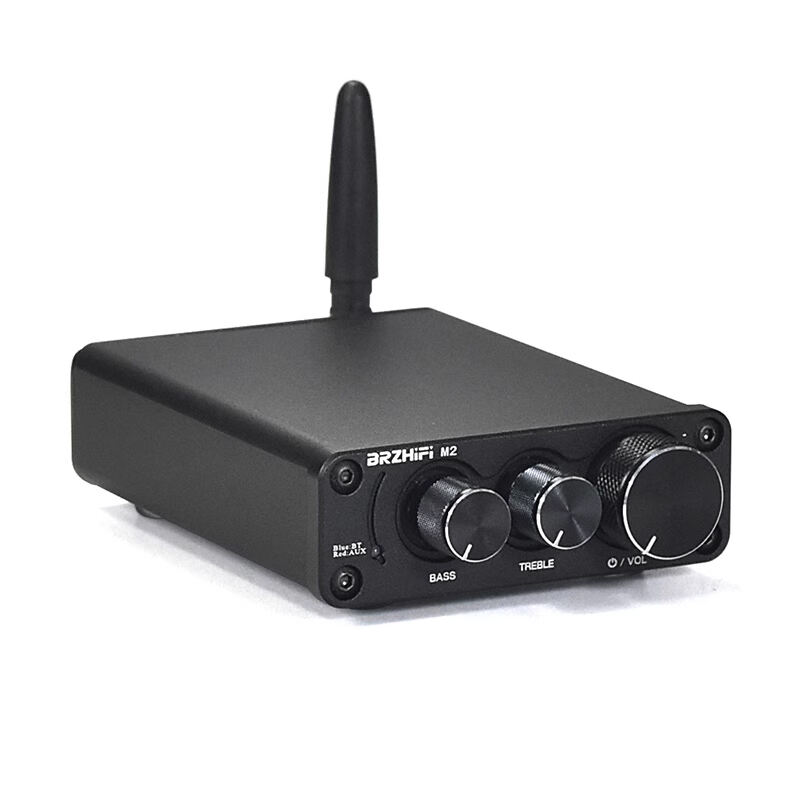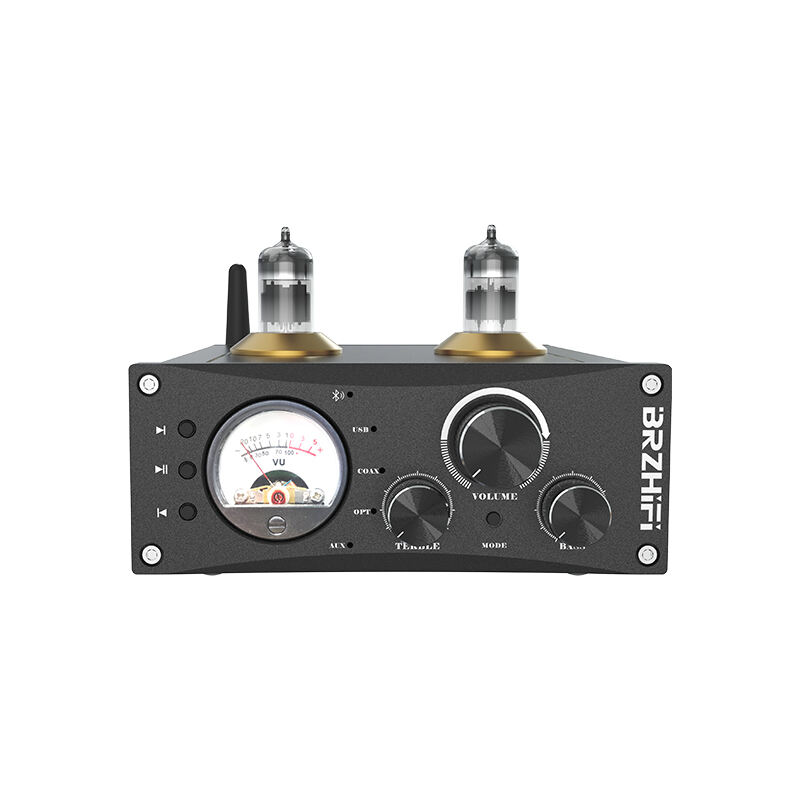Understanding the Evolution of Audio Amplification Technology
The world of audio amplification has seen remarkable advancement over the decades, transforming how we experience sound in our homes, studios, and concert venues. Amplifiers serve as the beating heart of any audio system, taking weak electrical signals and boosting them to drive speakers that fill our spaces with music. As technology progresses, the choice between digital and analog amplifiers has become increasingly complex, with each type offering distinct advantages that cater to different listening preferences and applications.
Today's audio enthusiasts face a crucial decision when investing in amplifiers - whether to embrace modern digital technology or stick with traditional analog circuits. This choice impacts not just sound quality, but also factors like reliability, efficiency, and overall listening experience. Understanding the fundamental differences between these technologies helps in making an informed decision that aligns with your specific needs.
The Classic Appeal of Analog Amplifiers
Core Technology Behind Analog Amplification
Analog amplifiers operate through a continuous wave form, processing audio signals in their natural state without converting them to digital information. These amplifiers use transistors or vacuum tubes to increase the amplitude of audio signals, maintaining an unbroken connection between the input and output. This direct signal path is often credited with producing a warmer, more natural sound that many audiophiles prefer.
The simplicity of analog circuits allows for immediate signal processing without any latency, creating a real-time response that musicians and audio purists particularly appreciate. Traditional analog amplifiers handle dynamic range exceptionally well, offering smooth transitions between quiet and loud passages in music.
Sonic Characteristics of Analog Systems
The sound signature of analog amplifiers is often described as warm, rich, and organic. This characteristic comes from the natural harmonic distortion that analog circuits introduce, which many listeners find pleasing to the ear. The continuous signal path creates subtle nuances in the sound that can make music feel more alive and three-dimensional.
Professional recording studios often maintain analog amplifiers for their ability to add desirable coloration to recordings. The natural compression and saturation that occur in analog circuits can enhance the musical experience, particularly for genres like rock, jazz, and classical music where tonal authenticity is crucial.

Digital Amplification: The Modern Approach
Digital Signal Processing Advantages
Digital amplifiers represent the cutting edge of audio technology, offering unprecedented precision and efficiency. These amplifiers convert analog signals into digital information, process them in the digital domain, and then convert them back to analog for speaker output. This digital processing allows for advanced features like room correction, precise equalization, and multiple input processing.
The accuracy of digital amplifiers results in exceptionally low distortion rates and consistent performance across all volume levels. Modern digital amplifiers can maintain signal integrity with minimal noise, making them ideal for clean, detailed sound reproduction.
Energy Efficiency and Space Optimization
One of the most significant advantages of digital amplifiers is their superior energy efficiency. Class-D amplifiers, the most common type of digital amplifiers, can achieve efficiency ratings above 90%, compared to around 50% for traditional analog designs. This efficiency translates to less heat generation, smaller form factors, and lower power consumption.
The compact size of digital amplifiers makes them perfect for modern living spaces where room is at a premium. Their ability to deliver high power output from a small chassis has revolutionized home audio and portable sound systems, enabling powerful amplification in previously impossible scenarios.
Performance Comparison and Practical Considerations
Sound Quality Analysis
When comparing analog and digital amplifiers, sound quality differences become apparent in specific listening scenarios. Analog amplifiers typically excel in reproducing mid-range frequencies, creating a sense of warmth and presence that many listeners associate with high-end audio. Their handling of transients and dynamic passages often feels more natural and effortless.
Digital amplifiers, however, offer superior precision in frequency response and can maintain perfect clarity even at extreme volume levels. Their ability to implement advanced digital signal processing can also compensate for room acoustics and speaker limitations, potentially delivering more accurate sound in real-world conditions.
Maintenance and Longevity Factors
The maintenance requirements between these two types of amplifiers differ significantly. Analog amplifiers, especially tube-based ones, require regular maintenance and periodic component replacement. Their components age over time, which can affect sound quality and reliability. However, they often remain serviceable for decades with proper care.
Digital amplifiers generally require less maintenance and offer more consistent performance over their lifespan. Their solid-state construction means fewer moving parts and less degradation over time. However, when digital amplifiers do fail, repairs can be more complex and may require specialized knowledge or complete unit replacement.
Making the Final Decision
Usage Scenario Considerations
Choosing between digital and analog amplifiers ultimately depends on your specific needs and preferences. For professional audio applications where consistency and precision are paramount, digital amplifiers often prove more suitable. Their reliability and repeatable performance make them ideal for live sound reinforcement and modern recording studios.
Home audio enthusiasts might lean toward analog amplifiers if they prioritize warmth and musicality in their listening experience. The emotional connection many feel with analog sound can make these amplifiers more satisfying for dedicated music rooms and high-end stereo systems.
Future-Proofing Your Investment
The audio industry continues to evolve, with both digital and analog technologies advancing in their own ways. Digital amplifiers are becoming increasingly sophisticated, with new features and improvements in sound quality. Their integration with modern home automation and streaming systems makes them particularly attractive for contemporary setups.
Analog amplifiers maintain their value through their timeless appeal and established sound characteristics. Many high-end manufacturers continue to develop and refine analog designs, ensuring these classic approaches remain relevant in the modern audio landscape.
Frequently Asked Questions
Can digital amplifiers sound as good as analog ones?
Modern digital amplifiers can achieve exceptional sound quality that rivals or exceeds analog designs in many aspects. The key differences lie more in the character of the sound rather than objective quality measures. High-end digital amplifiers often offer clarity and precision that some listeners prefer over the traditional analog sound.
How long do analog and digital amplifiers typically last?
With proper maintenance, analog amplifiers can last several decades, though they may require periodic component replacement. Digital amplifiers typically have a lifespan of 10-20 years, depending on usage and build quality. Their solid-state construction often means less maintenance but potentially more challenging repairs.
Which type of amplifier is better for home theater systems?
Digital amplifiers are often better suited for home theater applications due to their ability to process multiple channels efficiently, integrate with modern AV receivers, and provide consistent performance across all channels. Their space efficiency and cool operation also make them ideal for enclosed entertainment centers.

